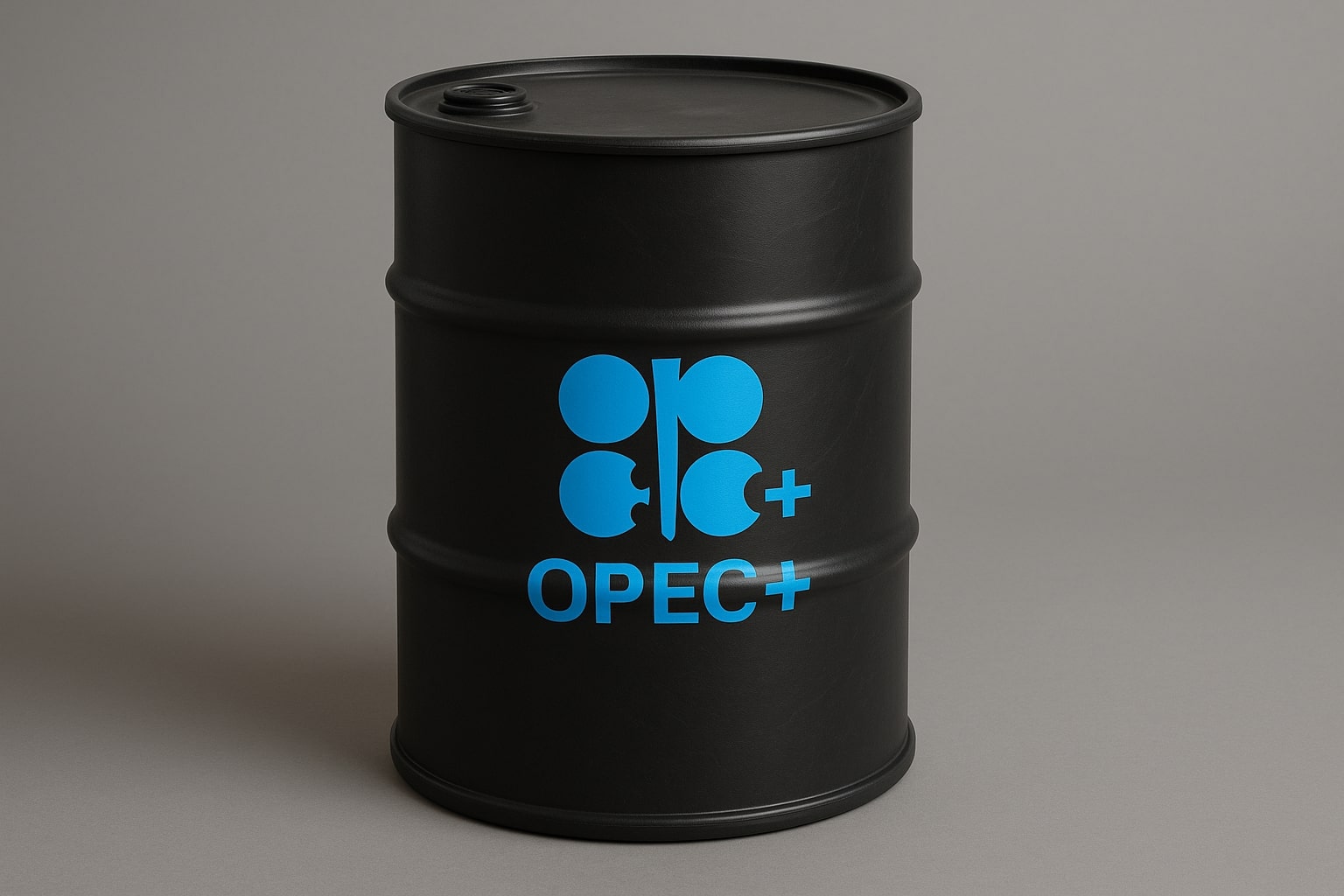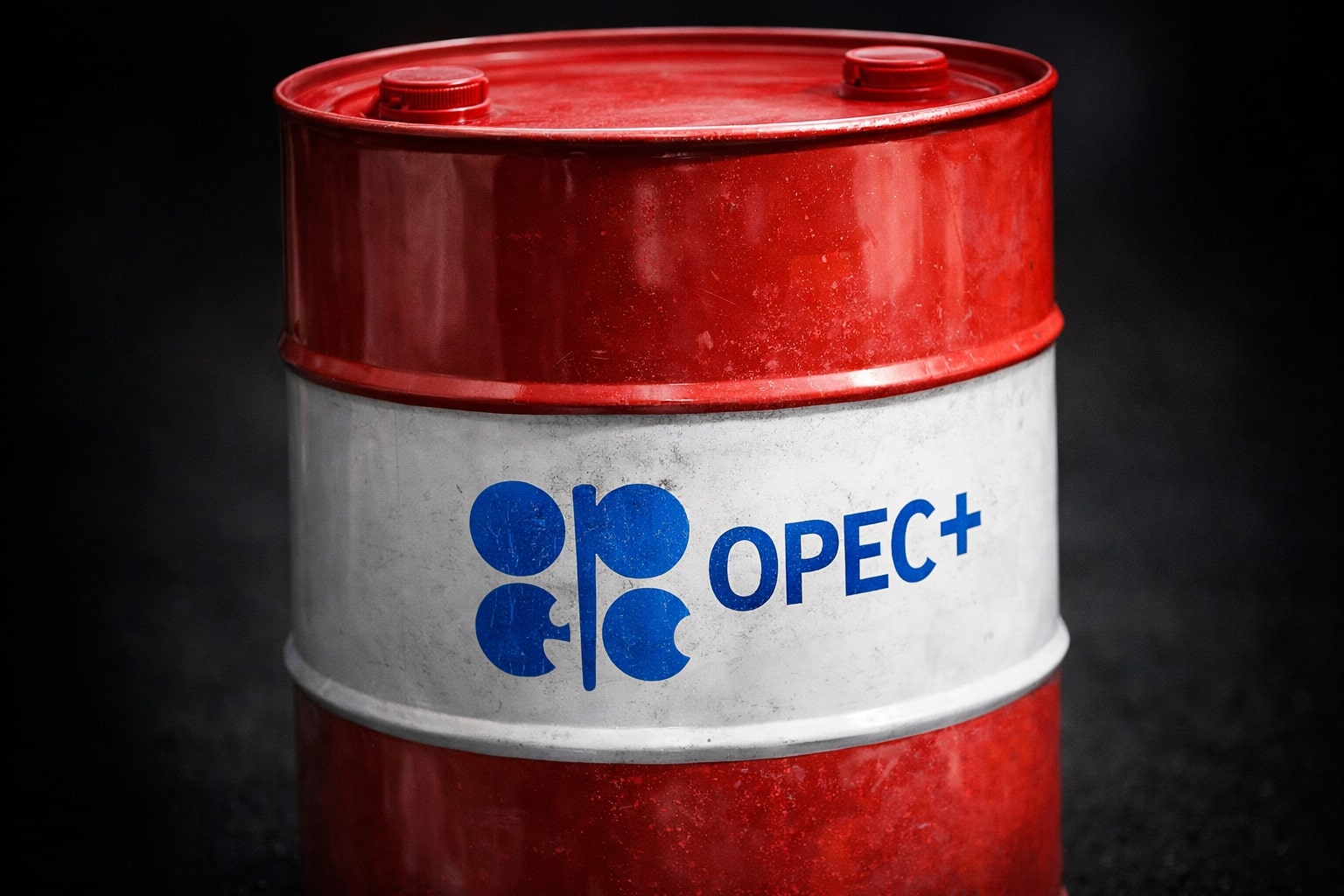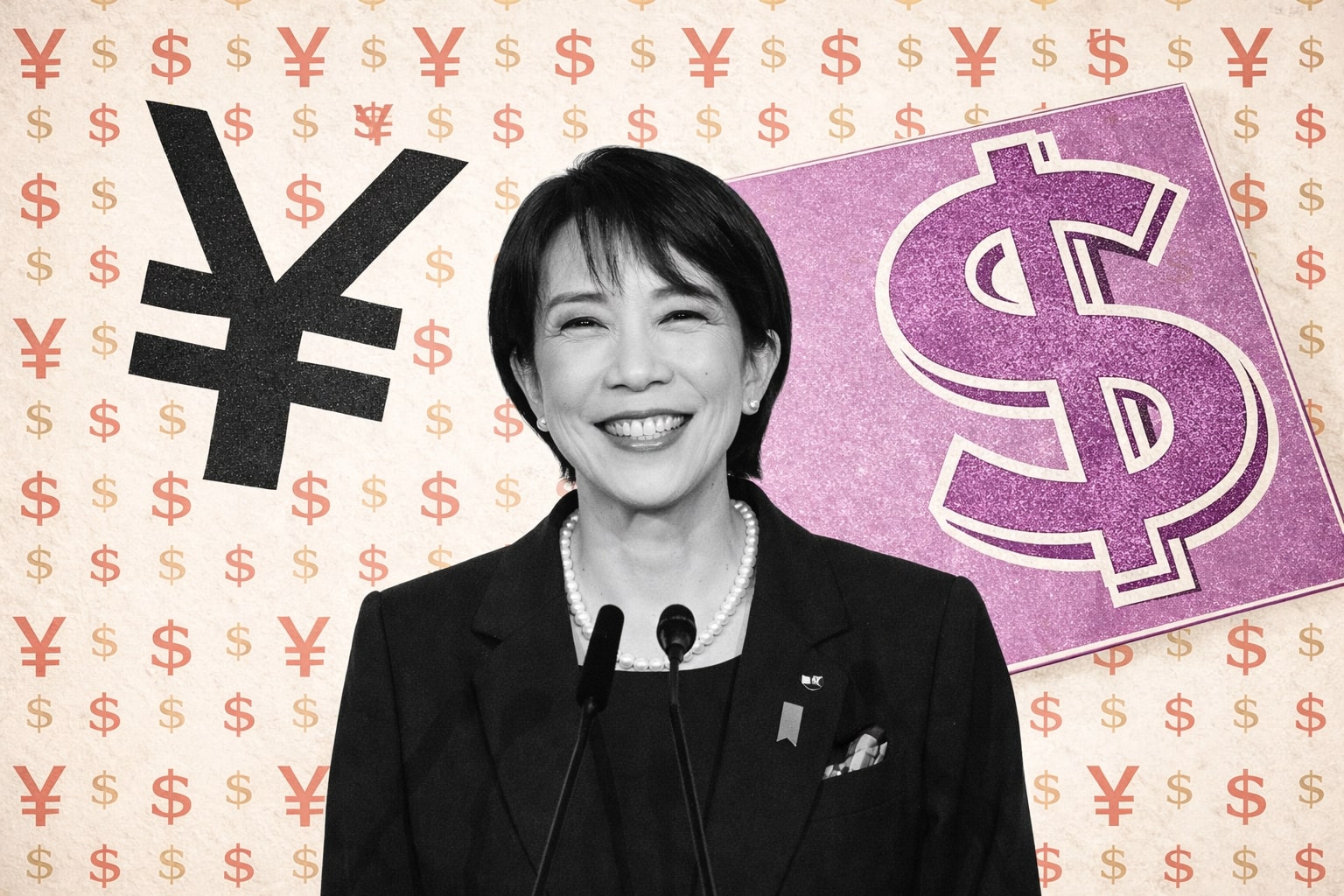
Oil Price Forecast: WTI $64 and Brent $67 Under Pressure from OPEC+ and Weak Demand
Geopolitics, U.S. Production Records, and India’s Russian Crude Buys Drive Market Sentiment | That's TradingNEWS
Oil Market Update: WTI (CL=F) and Brent (BZ=F) Face Supply Growth, Demand Uncertainty, and Geopolitical Shifts
The crude oil market has entered a decisive phase, with WTI (CL=F) closing at $64.01 a barrel and Brent (BZ=F) finishing at $67.45, both under pressure from concerns over weak U.S. demand and a pending supply boost from OPEC+. Traders are grappling with the end of the U.S. summer driving season, which historically marks the peak of American fuel consumption, and the arrival of fresh output from OPEC+ nations seeking to regain lost market share. The combination of softer seasonal demand and new barrels entering the market has kept prices below the $70 threshold, with Brent retreating 0.78% and WTI losing 0.91% in the latest session.
OPEC+ Supply Expansion Weighs on Brent and WTI
OPEC+ producers have accelerated production hikes into autumn, raising output after years of discipline. This is intended to claw back global market share, but it places downward pressure on prices at a time when inventories in the U.S. have already shown substantial draws. The OPEC basket itself traded at $69.65, reflecting the overall softness across producer benchmarks. Analysts warn that the planned increase in exports will hit just as U.S. refiners reduce throughput after peak driving demand fades, potentially leading to a global oversupply in Q4 2025.
U.S. Demand Concerns Amplify Market Caution
Gasoline futures slipped 1.07% to $1.969 per gallon, a sign that traders expect weaker consumption as Labor Day closes the busiest driving season. Weekly U.S. crude inventory data showed stronger-than-expected draws earlier in August, but these were skewed by freight and industrial demand rather than household consumption. While analysts like Phil Flynn point to resilience in industrial usage, the broader market remains skeptical, particularly as Trump’s latest round of tariffs—doubling levies on Indian imports to 50%—raises questions about global demand and trade flows in 2026.
Geopolitical Tensions: Russia, Ukraine, and India’s Defiance
Earlier spikes in oil were triggered by Ukrainian drone attacks on Russian export terminals, briefly injecting a risk premium into Brent. However, subsequent reports of potential European ceasefire talks erased those gains, underscoring how fragile geopolitics are in shaping short-term sentiment. Russia continues to redirect crude flows toward Asia, with Indian imports of Russian oil expected to rise in September despite Washington’s escalating tariff and sanction threats. Traders remain convinced that India will ignore U.S. pressure and maintain its Russian crude intake at discounted rates, further complicating supply-demand balances.
European Energy Realignment Strengthens U.S. Position
A major structural development is the European Union’s deal with Washington to import $750 billion worth of U.S. LNG, oil, and nuclear fuel by 2028, sharply reducing dependency on Moscow. In the first quarter of 2025, the U.S. already became Europe’s top supplier of oil and LNG, accounting for 15% of oil imports and over 50% of LNG trade. This shift reinforces America’s role as a swing supplier, but it also creates a more competitive environment for OPEC+ as the cartel struggles to keep market share in Europe.
Health and Environmental Backlash in the U.S.
A new study highlighted that oil and gas air pollution is linked to 91,000 premature deaths annually in the United States, alongside over 200,000 asthma cases and thousands of cancer diagnoses. The majority of these health impacts stem from the end-use stage of oil consumption, adding to the pressure on policymakers. Yet, the Trump administration is rolling back Environmental Protection Agency standards, aiming to “unleash American energy” even at the cost of higher public health risks. This push underscores the tension between supply growth ambitions and rising social costs of fossil fuel reliance.
U.S. Production Records and Forward Supply Outlook
The U.S. remains on track for record production, with crude output expanding in the Gulf of Mexico and shale regions. Annual production in 2024 already set a new record, and forecasts point to another expansion in 2026. At the same time, Louisiana Light rose 2.05% to $66.69 while Mars U.S. crude slipped 1.36% to $71.28, showing diverging regional price dynamics that reflect transportation bottlenecks and localized demand. The U.S. is also exporting aggressively to Europe and Asia, further integrating into global balances.
Strategic and Political Risks: Venezuela in the Spotlight
Tensions around Venezuela continue to simmer as Washington escalates pressure on Nicolás Maduro’s regime, even deploying naval assets to the Caribbean. Any conflict in Venezuela—home to the world’s largest proven oil reserves—would send shockwaves through global energy markets, tightening supply just as OPEC+ raises output. However, a U.S. invasion would also risk prolonged instability and regional spillovers, which could push oil significantly above $80 depending on the severity of disruptions.
Current Market Positioning
At present, WTI (CL=F) trades at $64.01 and Brent (BZ=F) at $67.45, reflecting investor caution heading into September. Prices remain range-bound as markets weigh OPEC+ supply growth against structural demand uncertainty, U.S. inventory draws, and geopolitical volatility. Natural gas (NG=F) has shown resilience, climbing 1.80% to $2.997, underscoring the role of gas as an alternative amid shifting energy trade flows.
This setup leaves oil markets caught between near-term bearish drivers—OPEC+ output hikes and seasonal U.S. demand weakness—and longer-term bullish risks from geopolitical instability and structural shifts in energy trade. With Brent capped under $70 and WTI under $65, traders must decide whether the next decisive move is a supply-driven dip toward $60 or a risk premium surge back toward $75.
That's TradingNEWS
Read More
-
Robinhood Stock Price Forecast: HOOD at $115 After 200% Rally Faces Valuation Stress
02.01.2026 · TradingNEWS ArchiveStocks
-
XRP Price Forecast - XRP-USD Nears $2 as $1.80 Support and Shrinking Supply Point to $2.60 Target
02.01.2026 · TradingNEWS ArchiveCrypto
-
Natural Gas Price Forecast: NG=F Tests $3.50–$3.60 Floor Before LNG Wave
02.01.2026 · TradingNEWS ArchiveCommodities
-
Stock Market Today: Nasdaq Hits 23,467 as Nvidia (NVDA), Micron (MU) and Baidu (BIDU) Drive AI Surge
02.01.2026 · TradingNEWS ArchiveMarkets
-
USD/JPY Price Forecast - USDJPY=X Holds Near 157 as BoJ Caution and Fed Cut Bets Drive the Move
02.01.2026 · TradingNEWS ArchiveForex


















